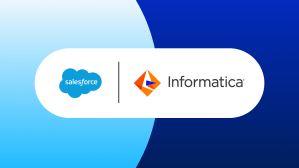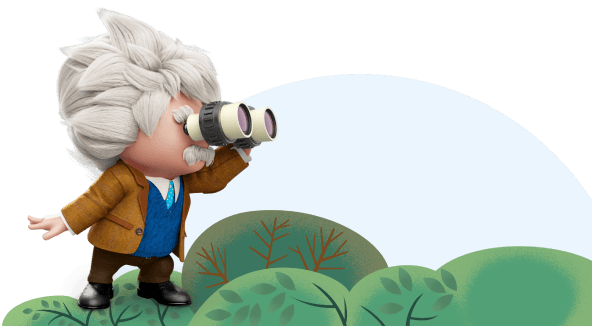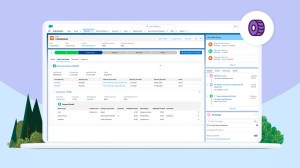Rob Seaman’s Slack profile is a smiling avatar with a white mohawk and 5 o’clock shadow. It’s probably not what one envisions when thinking “tech exec,” but it’s the 44-year-old’s vision of the future of Salesforce and Slack that led him to become Salesforce’s SVP of Product Management for Slack, where he focuses on how to integrate Salesforce and Slack products. With 20 years in product management, Seaman knows workflow is all about efficiency. Even his LinkedIn profile just states “Product person.”
We spoke with Seaman about how the combination of Slack and Salesforce will make work hyper-efficient for partners, how customers in sales, service, marketing, and more will all have more time to do what matters most, and even why emojis are essential to the future of work.
And in true “work anywhere” fashion, Seaman did the interview from his son’s bedroom.

Q. The pandemic has forced us to rethink everything about work. How does bringing Slack into Salesforce reshape not just where — but how we work?
That’s the unique combination of these two companies. Throughout the pandemic, Salesforce helped companies transform to digital to better interact with their customers. Slack was helping companies transform to digital too, engaging their employees and allowing them to work from anywhere. You put the two companies together, and now you can digitally engage your customers and your employees that support your customers — all in one place.
Slack helps you bridge gaps where email previously failed, allows businesses to connect more directly with their customers, and makes workflows more efficient. Plus, you have the attention of most users because they are already using Slack, so it’s a very attractive place to put your software.
Slack helps you bridge gaps where email previously failed, allows businesses to connect more directly with their customers, and makes workflows more efficient.
Rob Seaman, SVP Product Management Slack, Salesforce
That’s where Slack becomes your digital HQ. Even if you go fully remote, you still need some of the organizing constructs that you previously had in physical locations — teams and places you go for help. You can model all that in Slack now. How you set up Slack is how you effectively model your company, your sales team, marketing organization, or any department for that matter.
Q. What led to you taking on the lead role with Slack?
About a month after the announcement that Salesforce was acquiring Slack, we had weekly meetings in December with execs and cloud leaders soliciting use cases for how we could integrate the platforms. I was working on our industries team and had some ideas on how Slack could transform healthcare — specifically, the provider ecosystem. Those suggestions went from: “That’s exactly what we want to do. We should build these” and turned into: “Why don’t you lead us through this initiative?”
It speaks to Salesforce’s culture that if you show initiative and interest, you’re often provided an opportunity you might not have previously had.
Q. What’s the vision for Slack within Salesforce?
The vision is ultimately to have Slack be the primary engagement location for our users, their communication, workflows, and processes. We call this the Slack-first Customer 360 — a single platform that connects employees, customers, and partners with each other and the apps they use.
We call this the Slack-first Customer 360 — a single platform that connects employees, customers, and partners with each other and the apps they use.
Rob Seaman, SVP Product Management Slack, Salesforce
Imagine a salesperson is working in Slack. Seventy percent of their day is spent communicating with their teams, and/or collaborating with their customers and partners. Things that need to be brought to their attention from Salesforce and other line-of-business systems will happen in Slack, like updates on priority deals or any customer service issues. The beauty of this is that these notifications occur where people are already working, and they can take action on them from within Slack.
Q. How is that different from before?
If I need to approve an expense report, a purchase order, a piece of creative, or an offer for a new candidate on my team — I have to leave wherever I’m working, go to a separate system like Concur or Workday, log into that system, then complete the task.
Over the course of a week, the total expense for me from a cognitive load and distraction perspective is way higher than most people realize. We can basically delete that! By bringing everything into Slack, we can reduce distractions and context switching — keeping users in their flow and helping them do their jobs better.
Q. What are some of the new capabilities you’re most excited about?
Slack allows us to up-level all our products and solve for a broader set of use cases for the lines of businesses we serve, like sales, service, marketing, etc.
Using sales as an example, closing a huge deal usually involves getting approvals from a manager, legal, finance, maybe even the CEO. Those approvals are typically handled over the void that are email and spreadsheets, which people read inconsistently.
Now you can engage directly with your internal team, as well as your customer through Slack. The contract and approval process, often opaque, becomes so much more transparent and dramatically faster with everyone in the same workstream.
Q. What about AI? What are the possibilities of how Einstein can enhance Slack?
We’re going to make it easy for customers, partners, and product teams to build Slack apps with Einstein, our artificial intelligence technology, to help people do their job. Whether that’s finding the right subject matter expert to help close a case, or figuring out the right product specialist to pull into a deal, Einstein can help with that.
One of the beauties of Slack is how easy it is to search and discover information. A big strength of Salesforce AI is text and natural language processing. Say you’re a new sales rep joining an account that has been a customer for five years. How do you get up to speed? You could ask a question in a Slack channel and quickly receive an answer from an Einstein Bot. There’s a whole host of intelligence at work here. Putting AI to work in these small moments of productivity makes a huge difference when you consider how work gets done in this new world. These are just a few ways we intend to apply Einstein to supercharge productivity.
Q. What kind of opportunities do you see for Salesforce partners when it comes to Slack?
It’s an amazing opportunity for partner communities to not just drive more adoption of what they already have, but to create new innovations that will reach more people. One of the cool aspects of adding Slack to Salesforce is it really broadens the number of users our partners can serve. From sales and finance to legal and marketing to contractors and their agencies, this really broadens the aperture of users, and provides a really attractive destination for developers to apply their problem-solving skills.
The biggest enterprises out there have multiple custom developed apps on top of Salesforce. Now they can take those apps and integrate them into Slack and drive even more adoption.
Q. Integrating and learning new systems or apps can be very challenging — even frustrating. Why will this be different?
We’re making sure the integration between Salesforce and Slack is super easy. It’s more of a translation than a rebuild, and we’re going to take care of the translation for our customers. If you’ve made this investment in Salesforce, you can pick and choose what you’ve already built. You say, “This part I want in Slack,” then it goes in; “this part I don’t” — it stays where it is. It‘s all very low effort.
Q. There’s also a vibe to using Slack. How can Slack within Salesforce affect company culture?
Slack is fun. Salesforce is fun. The two cultures are fun. Put the two together, and arguably, it makes it fun to work again. You can work wherever you want, in tools that are fun to use. If somebody sends me a message and I answer with emoji eyes — they know I’ve seen it, I’m on it, and I didn’t have to type anything. The amount of work required of us decreases, and now we can just focus on what humans are great at — like creative work and complex problem-solving.
Slack is fun. Salesforce is fun. The two cultures are fun. Put the two together, and arguably, it makes it fun to work again.
Rob Seaman, SVP Product Management Slack, Salesforce
For more details about Salesforce’s acquisition of Slack, click here.



















